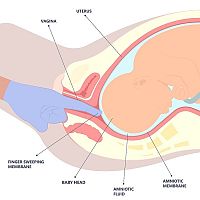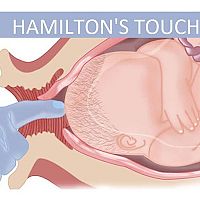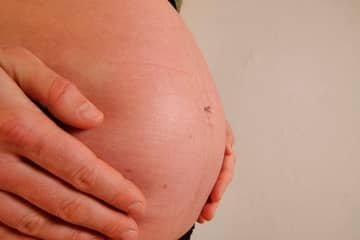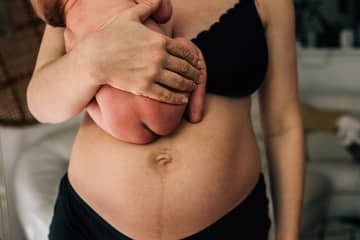
Hamilton's maneuver to induce labor. What is it and how is it done?
Hamilton maneuver is a method you would find in vain in modern medical manuals. It is an act whose goal is to induce labor (uterine contractions). It was named after the Scottish doctor James Hamilton. The procedure was first described back in 1810. This method still has a place in obstetrics today, and the implementation of Hamilton's maneuver replaces, if necessary, the need to induce labor with medication. In order for the action to be performed, certain conditions must be met. The mother must always be informed and must express her consent to the implementation of this palpation. How is Hamilton's touch done? Does the Hamilton touch have risks for the baby or the mother? What is Hamilton's touch and when is it accessed?
This special palpation is performed in the event of the need to induce labor - acceleration of pregnancy. It is a minimally invasive intervention that replaces the need to induce labor by pharmaceutical means. Hamilton's maneuver is considered a method of pre-induction of labor, that is, it is not an induction method that is used directly to artificially induce labor. In general, "Hamilton" is considered to be a procedure that poses minimal risk to the mother and the baby. However, there are also circumstances in which this method must not be used. The success of Hamilton's method is not 100 percent guaranteed, so some doctors reject the implementation of this maneuver as a pre-induction of labor in practice.
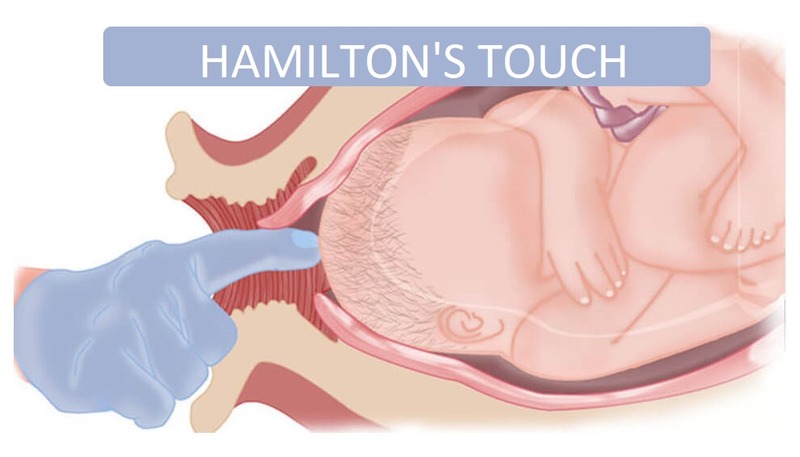
Hamilton's touch
What is Hamilton's touch? It is a mechanical method of pre-induction of labor, which is approached for the purpose of speeding up the pregnancy, which should end with a natural vaginal birth. Other known methods are, for example, hydrophilic sticks or a balloon Foley catheter, the purpose of which is also to induce labor contractions and accelerate pregnancy. Subsequently, there are also pharmacological methods of labor induction. Hamilton's maneuver is therefore one of the methods from a set of measures for pre-induction of labor. The goal is to prepare the woman's body for the course of childbirth, thereby avoiding, for example, induction itself - artificial induction of labor. Preinduction, even with Hamilton's method, can be done for various reasons, while certain conditions must be met.
Hamilton's maneuver is a manual-mechanical technique that is performed during a vaginal examination. During the operation, the amniotic membranes separate from the cervix. In this way, endogenous prostagladin should be released. A hormone that supports the maturation of the uterus and its cervix, which should activate muscle contractions. This is what should lead to the start of natural vaginal birth. Some women do not feel Hamilton's touch, for other women the procedure is unpleasant or even painful. Nevertheless, it is a very non-invasive procedure that does not carry any high risks. The disadvantage of this form of pre-induction of labor is that success is not guaranteed, so it is sometimes necessary to resort to other forms of pre-induction or direct artificial induction of labor.
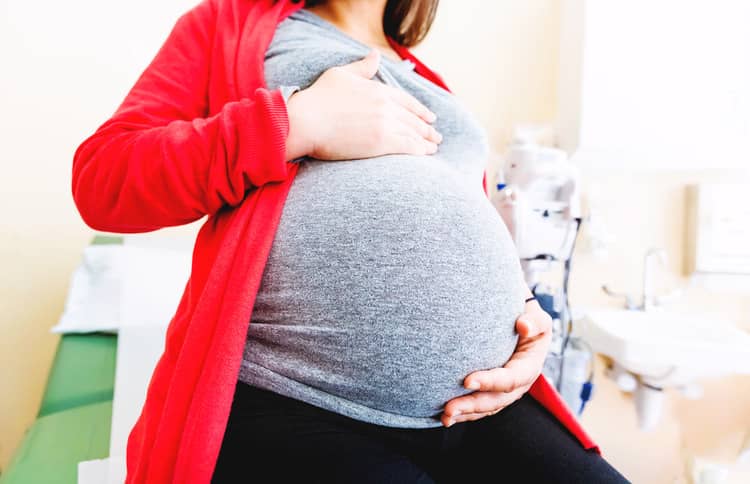
When is Hamilton's touch performed?
The forms of pre-induction or induction of labor are approached only if it is necessary and do not involve any natural methods of starting - inducing labor. Hamilton's maneuver is usually performed if the doctor expertly assesses that the pregnancy is not nearing its conclusion and the cervix is immature despite the due date. Hamilton's method can effectively support the ripening of the cervix and contribute to the start of labor activity.
A normal pregnancy lasts approximately 280 days, which is 40 weeks. The due date starts counting from the last day of menstruation. The gynecologist then determines the estimated date of birth, which should optimally take place in the 38th to 41st week of pregnancy. After the 41st week, it is already a transferred pregnancy. Most births take place between the 38th and 40th weeks or the 41st and 42nd weeks. Only approximately 4% of mothers give birth within the specified period. Premature birth is a pregnancy that occurs before the end of the 37th gestational week. If the pregnancy is at term (39-40 weeks), but the body does not show any signs that labor is starting, the doctor may, for adequate reasons of risk to the mother or the child, suggest that he use Hamilton's maneuver to induce spontaneous labor. In order for the Hamilton maneuver to be performed, it is important that the cervix is soft and dilated to at least 1 cm. The child must also be mature enough. If the cervix is closed, the maneuver should not be performed, as it can be painful for the woman. The mother must always be informed about the procedure and must give her consent.
In addition to delivery at term, but without signs of starting labor, Hamilton's maneuver is mainly performed on pregnant women after term. For example, if the pregnancy lasts longer than 10 or 14 days before the estimated due date. Despite the fact that artificial induction of labor is often resorted to when carrying, the Hamilton touch can be a suitable choice mainly because it is a very non-invasive procedure that can increase the probability of inducing labour. Hamilton's maneuver can also be performed if the baby weighs more than 4,000 g, the woman's amniotic fluid has drained, but labor does not start for several hours, or the woman has complications during pregnancy - preeclampsia or gestational diabetes.
The cervix itself is sealed by the produced secretion, which is formed in a woman during pregnancy, but also in smaller quantities during, for example, the period of the menstrual cycle. During pregnancy, this secretion has the task of protecting the baby in the abdomen from various infections and bacteria. The cervix is "sterile" thanks to this secretion. It has a thick consistency, usually clear in color. Closer to birth, it changes to dark red to brownish. Before childbirth, the cervix opens and this secretion is released - it is also called a mucus plug . However, just because the plug is released, it is not yet guaranteed that labor will start, labor may still start in a few days. In some cases, the Hamilton maneuver is used to speed up labor.

Hamilton maneuver and obstacles
It is not always appropriate to choose this method of labor induction. In some cases, it is not carried out in principle. Most often, these are cases when a woman is indicated for delivery by cesarean section. Then this maneuver is unjustified. The doctor must also be aware of whether the woman has placental anomalies - placenta previa (the position of the uterus is incorrect and is too close to the cervix). Hamilton's touch could cause serious bleeding. In such a case, palpation would be considered risky, and delivery by caesarean section is approached exclusively.
The risk is also present if group B streptococcus is present in the woman. Vaginal procedures risk introducing an infection into the uterus, which would put the fetus and the mother herself at risk. The maneuver is not performed even if the woman has chlamydia, gonococcus or other similar bacterial diseases.
How is Hamilton's touch done?
The procedure is performed by a gynecologist - examining doctor. This is a relatively simple and elementary operation. During the procedure, the doctor inserts a finger into the woman's vagina to a certain depth, while feeling the amniotic membranes (covers). Subsequently, with appropriate pressure and a circular movement of the finger, he separates these lower birth membranes from the cervix. Thus, the amniotic sac, which was attached to the cervix, is mechanically separated. Subsequently, the uterine mucosa is stimulated and endogenous prostaglandin is released, which accelerates the ripening of the uterus. An accompanying sign of Hamilton's touch may be light bleeding or spotting. The doctor performs the procedure only if it is appropriate and the birth canal is at least a little open - the cervix must not be completely closed. Under normal circumstances, this touch is rather unpleasant for a woman, not painful. However, feelings are very individual. No analgesia or anesthesia is necessary.
When labor starts after Hamilton's maneuver is also individual. Contractions should start approximately within 48 hours of the procedure, but this is not a stable time frame and labor can start earlier or later. In some cases, Hamilton's touch is implemented repeatedly. Pain in the lower abdomen can be a sign of effectiveness. The medical procedure itself may only be performed if the woman-mother gives the doctor her consent. The doctor must first of all inform the woman what the procedure is, how it is carried out and for what reason it should be performed. It is completely normal if a woman decides not to agree to this act.
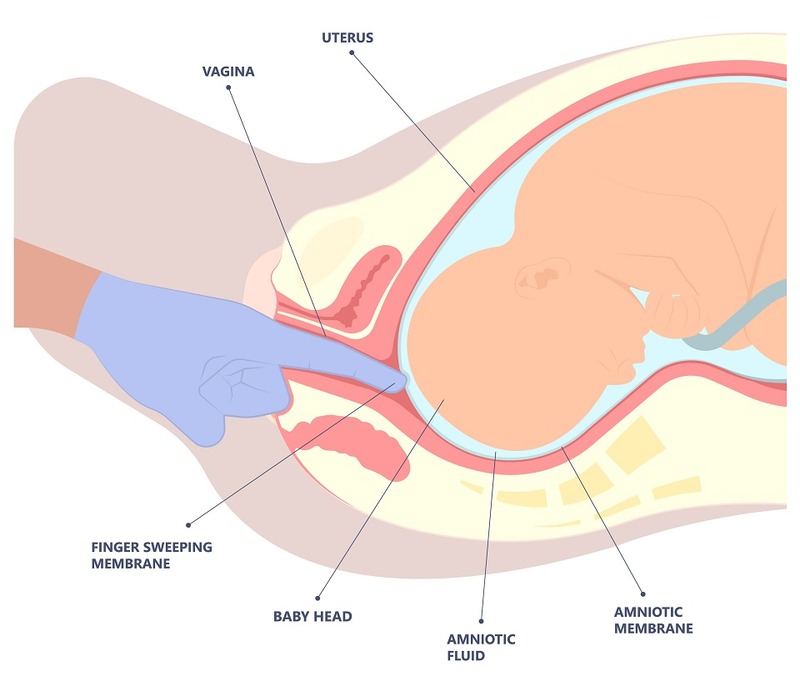
The risks and success of Hamilton's touch
The success of Hamilton's maneuver is one of the most discussed topics. Opinions on the effectiveness of Hamilton's touch differ significantly among doctors. The Hamilton maneuver is an intervention in the natural birth process, although compared to pharmaceutical forms, it is an intervention of a much smaller scale. The success rate of the procedure has no clinically supported data (percentage success rate). There are doctors who practice this procedure and those who do not approach it and use other forms of pre-indication. In clinical practice, there are many cases when the maneuver helped to induce labor, but there are also cases when it was necessary to resort to other forms of labor induction.
Risks in this case only occur if the procedure is performed under inappropriate conditions and certain obstacles are indicated - indication for caesarean section, diagnosed chlamydia, gonorrhea, streptococcus-B (risk of introducing infection into the uterus) or placental anomalies. There are also risks associated with the procedure being performed if the cervix is completely closed. The procedure can be painful for a woman at such a stage.
Hamilton's touch - experience
The experiences of women - parents in connection with the use of Hamilton's touch are very diverse. Some discussants stated that they even experienced Hamilton's repeated touch, which helped to give birth. There are also women who reported that after Hamilton's touch, contractions occurred a day later and the birth went well. For some, "Hamilton" even helped within a few hours. At the same time, however, there are also many opinions that speak of its ineffectiveness. Some mothers were not helped by its implementation during the first, second or third birth. There are also discussions about the fact that the attending physician did not inform the woman about the performance of this act. Several discussants said that the procedure did not work and was quite painful.
The most frequent questions - FAQ
Are you interested in the issue of Hamilton's touch? Want to know how Hamilton's maneuver is done? When does labor start after it is performed? Is Hamilton's touch safe for the baby and the mother? When is Hamilton's touch done? We will answer all your questions in our article. If you have other questions, don't hesitate to ask us in the comments. If you have personal experience with this procedure, we would appreciate your opinions. All you have to do is join the discussion under the article.
How is Hamilton's maneuver performed?
What is Hamilton's touch?
What are the risks of Hamilton's maneuver?
When is Hamilton's maneuver performed?
Gallery
Pridať komentár

